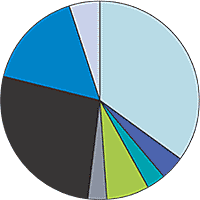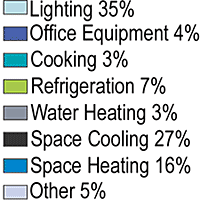The Essential Design Element for Any Office Space
|
|||||||
Space Efficiency
Rent is another big expense for office buildings. Space equals money, as buildings are charged dollars for every square foot. The pursuit of space efficiency aims to improve how well a building is using the space it is paying for to create revenue for the company. Studies of sales organizations, accounting firms, consulting firms and others concluded that in many office environments an employee’s desk may be unoccupied 60% of the year.
The discovery of the empty, yet expensive, workspaces drove the development of the organizational concepts: hot-desking and desk pooling. The term hot-desking is borrowed from the Naval term “hot-bunking,” which is a practice on submarines where one cot is used by multiple sailors—one after the other. Hot-desking is a strategy that aims to rotate employees in and out of community desks so efficiently that the chair is reoccupied before it has time to cool down. Desk pooling provides employees who are normally elsewhere with a group of standard and unpersonalized desks to use during those rare visits to the office. The desk is equipped with all usual accouterments: stapler, phone, power for laptop and an Internet link. But it is devoid of personalized touches and an everyday owner.
The reaction to the loss of a personal office space was negative across the board. Employees, even those who do not spend much time at their desk, associate their workstations with feelings of importance, security, and ownership. In the 21st century, office spaces have become more important than functional spaces; they provide a sense of identity and represent, in square feet and ergonomic furniture, an investment in the individual by the company.
Hot-desking and desk pooling increased the space efficiency of the building. They also generally upset the company’s most valuable asset (its employees), reduced productivity, and communicated to the workforce that their contributions were minimal and their importance marginal.
Achieve Efficiency and Add Value with Lighting Control
Improving system efficiencies can negatively affect the value of a space, but efficiency and value are not mutually exclusive. Opportunities exist to create system efficiency, and at the same time, make an office space more flexible, productive, healthy, and valuable to an organization.
One such opportunity exists in the design of the building’s lighting system—or, more specifically, the design of the building’s lighting control system. The lighting control system specified in a building determines how occupants are able to use the lights in the space. In the most minimal capacity, light control allows lights to be switched on/off either independently or in larger groups. Dimming technologies allow light fixtures to provide a range of light output—often ranging from 1 or 10% to the full 100%. Lights can be controlled manually with a handheld remote or from wall stations, or programmed to automatically turn on and off at certain times or when rooms are empty. Light control can even be preset to recall specific light levels—much like the presets programmed into a car radio—based on the activities in the space. Light controls enable a building to save energy and allow employees to select a comfortable light level that is best suited to their tasks.











